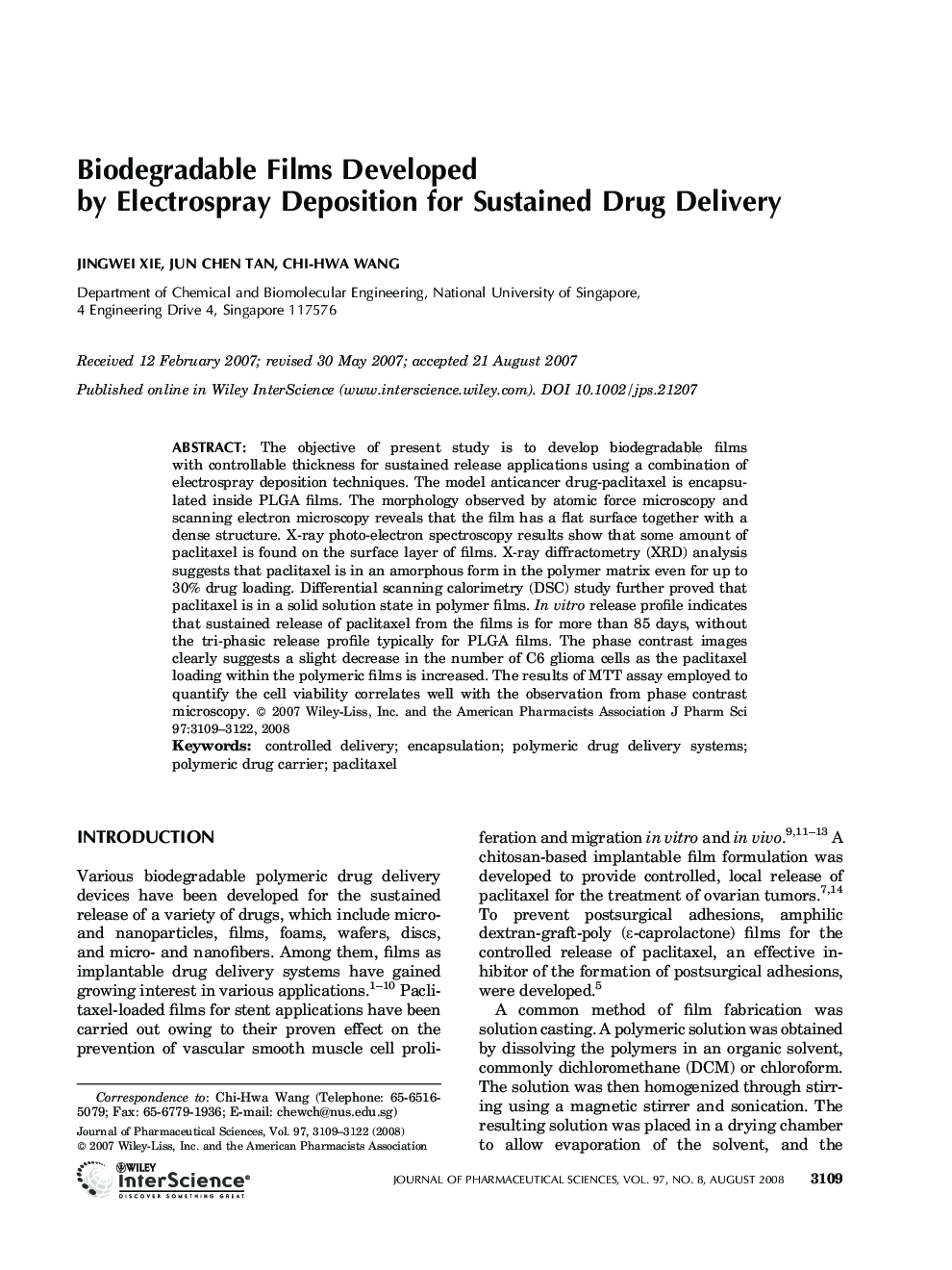| Article ID | Journal | Published Year | Pages | File Type |
|---|---|---|---|---|
| 2487351 | Journal of Pharmaceutical Sciences | 2008 | 14 Pages |
Abstract
The objective of present study is to develop biodegradable films with controllable thickness for sustained release applications using a combination of electrospray deposition techniques. The model anticancer drug-paclitaxel is encapsulated inside PLGA films. The morphology observed by atomic force microscopy and scanning electron microscopy reveals that the film has a flat surface together with a dense structure. X-ray photo-electron spectroscopy results show that some amount of paclitaxel is found on the surface layer of films. X-ray diffractometry (XRD) analysis suggests that paclitaxel is in an amorphous form in the polymer matrix even for up to 30% drug loading. Differential scanning calorimetry (DSC) study further proved that paclitaxel is in a solid solution state in polymer films. In vitro release profile indicates that sustained release of paclitaxel from the films is for more than 85 days, without the tri-phasic release profile typically for PLGA films. The phase contrast images clearly suggests a slight decrease in the number of C6 glioma cells as the paclitaxel loading within the polymeric films is increased. The results of MTT assay employed to quantify the cell viability correlates well with the observation from phase contrast microscopy. © 2007 Wiley-Liss, Inc. and the American Pharmacists Association J Pharm Sci 97: 3109-3122, 2008
Keywords
Related Topics
Health Sciences
Pharmacology, Toxicology and Pharmaceutical Science
Drug Discovery
Authors
Jingwei Xie, Jun Chen Tan, Chi-Hwa Wang,
